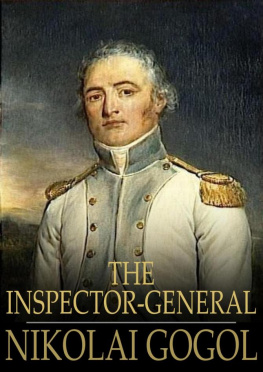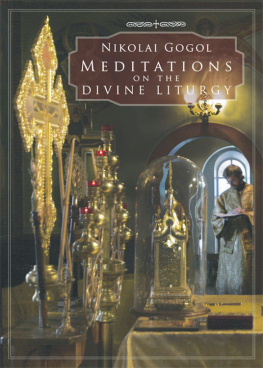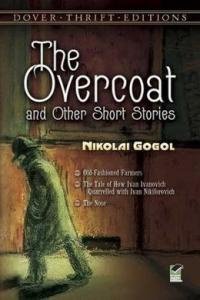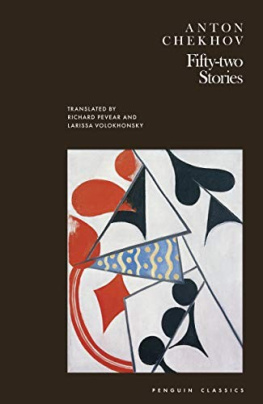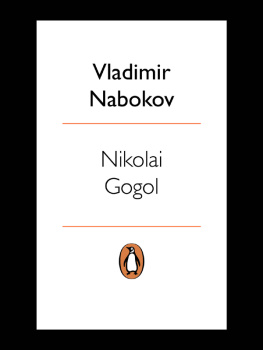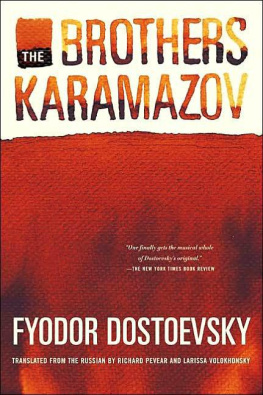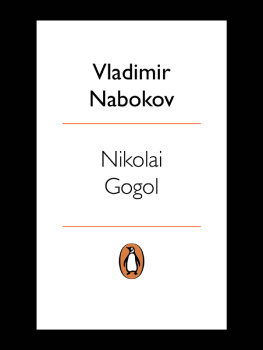Nikolai Gogol - The Collected Tales
Here you can read online Nikolai Gogol - The Collected Tales full text of the book (entire story) in english for free. Download pdf and epub, get meaning, cover and reviews about this ebook. year: 2011, publisher: Vintage Books, genre: Detective and thriller. Description of the work, (preface) as well as reviews are available. Best literature library LitArk.com created for fans of good reading and offers a wide selection of genres:
Romance novel
Science fiction
Adventure
Detective
Science
History
Home and family
Prose
Art
Politics
Computer
Non-fiction
Religion
Business
Children
Humor
Choose a favorite category and find really read worthwhile books. Enjoy immersion in the world of imagination, feel the emotions of the characters or learn something new for yourself, make an fascinating discovery.

- Book:The Collected Tales
- Author:
- Publisher:Vintage Books
- Genre:
- Year:2011
- Rating:4 / 5
- Favourites:Add to favourites
- Your mark:
- 80
- 1
- 2
- 3
- 4
- 5
The Collected Tales: summary, description and annotation
We offer to read an annotation, description, summary or preface (depends on what the author of the book "The Collected Tales" wrote himself). If you haven't found the necessary information about the book — write in the comments, we will try to find it.
The Collected Tales — read online for free the complete book (whole text) full work
Below is the text of the book, divided by pages. System saving the place of the last page read, allows you to conveniently read the book "The Collected Tales" online for free, without having to search again every time where you left off. Put a bookmark, and you can go to the page where you finished reading at any time.
Font size:
Interval:
Bookmark:

FIRST VINTAGE CLASSICS EDITION, JULY 1999
Copyright 1998 by Richard Pevear and Larissa Volokhonsky
All rights reserved under International and Pan-American Copyright Conventions.
Published in the United States by Vintage Books, a division of Random House, Inc.,
New York, and simultaneously in Canada by Random House of Canada Limited,
Toronto. Originally published in hardcover in the United States by Pantheon
Books, a division of Random House, Inc., New York, in 1998.
Vintage Books, Vintage Classics, and colophon
are trademarks of Random House, Inc.
The Library of Congress has cataloged the Pantheon Books edition as follows:
Gogol, Nikola Vasilevich, 18091852.
[Short stories. English. Selections]
The Collected Tales of Nikolai Gogol / Nikolai Gogol;
translated and annotated by Richard Pevear and Larissa Volokhonsky.
p. cm.
Contents: St. Johns EveThe night before ChristmasThe terrible vengeanceIvan Fyodorovich Shponka and his auntOld world landownersViyThe story of how Ivan Ivanovich quarreled with Ivan NikiforovichNevsky ProspectThe diary of a madmanThe noseThe carriageThe portraitThe overcoat.
1. Gogol, Nikola Vasilevich, 18091852Translations into English. I. Pevear, Richard, 1943 .II. Volokhonsky, Larissa. III. Title.
PG3333.A6 1998
891.733dc21 9737228
eISBN: 978-0-307-80336-8
www.vintagebooks.com
v3.1

with Ivan Nikiforovich

Art has the provinces in its blood. Art is provincial in principle, preserving for itself a naive, external, astonished and envious outlook.
A NDREI S INYAVSKY ,
In Gogols Shadow
N IKOLAI V ASSILYEVICH G OGOL was born on April 1, 1809, in the village of Sorochintsy, Mirgorod district, Poltava province, in the Ukraine, also known as Little Russia. His childhood was spent on Vassilyevka, a modest estate belonging to his mother. Nearby was the town of Dikanka, once the property of Kochubey, the most famous hetman of the independent Ukraine. In the church of Dikanka there was an icon of St. Nicholas the Wonderworker, for whom Gogol was named.
In 1821 Gogol was sent to boarding school in Nezhin, near Kiev. He graduated seven years later, and in December 1828, at the age of nineteen, left his native province to try his fortunes in the Russian capital. There he fled from posts as a clerk in two government ministries, failed a tryout for the imperial theater (he had not been a brilliant student at school, but had shown unusual talent as a mimic and actor, and his late father had been an amateur playwright), printed at his own expense a long and very bad romantic poem, then bought back all the copies and burned them, and in 1830 published his first tale, St. Johns Eve, in the March issue of the magazine Fatherland Notes. There followed, in September 1831 and March 1832, the two volumes of Evenings on a Farm near Dikanka, each containing four tales on Ukrainian themes with a prologue by their supposed collector, the beekeeper Rusty Panko. They were an immediate success and made the young provincial a famous writer.
Baron Delvig, friend and former schoolmate of the poet Alexander Pushkin and editor of the almanac Northern Flowers, had introduced Gogol to Pushkins circle even before that, and in 1831 he had made the acquaintance of the poet himself. Writing to Pushkin on August 21 of that year, Gogol told him how his publisher had gone to the shop where the first volume of Evenings was being printed and found the typesetters all laughing merrily as they set the book. Shortly afterwards, Pushkin mentioned the incident in one of the first published notices of Gogols work, a letter to the editor of a literary supplement, which began: I have just read Evenings on a Farm near Dikanka. It amazed me. Here is real gaietyhonest, unconstrained, without mincing, without primness. And in places what poetry! What sensitivity! All this is so unusual in our present-day literature that I still havent recovered. At twenty-two Gogol was well launched both in literature and in society.
In 1835 came Mirgorod, another two-volume collection of Ukrainian tales, and Arabesques, a group of articles and tales reflecting the life of Petersburg, including Nevsky Prospect, The Diary of a Madman, and the first version of The Portrait. By then Gogol had also begun work on the novel-poem Dead Souls. When Pushkin began to publish his magazine The Contemporary in 1836, he included tales by Gogol in the early issuesThe Carriage in the first and The Nose in the third. April of that same year saw the triumph of his comedy The Inspector General.
In June 1836, at the height of his fame, Gogol left Russia for Switzerland, Paris, and Rome. Of the remaining sixteen years of his life, he would spend nearly twelve abroad. He returned in the fall of 1841 to see to the publication of the first volume of Dead Souls. When the book finally appeared in May 1842, its author again left the country, this time for a stretch of six years. Later in 1842, a four-volume edition of Gogols collected writings (minus Dead Souls) was brought out in Petersburg. Among the previously unpublished works in the third volume was his last and most famous tale, The Overcoat. By then, though he was to live another decade, his creative life was virtually over. It had lasted some twelve years. And in terms of his tales alone, it had been even briefer, condensed almost entirely into the period between his arrival in Petersburg and his first trip abroad in 1836.
The road that brought Gogol from the depths of Little Russia intersected with Nevsky Prospect, all-powerful Nevsky Prospect, in the heart of the capital. His art was born at that crossroads. It had the provinces in its blood, as Andrei Sinyavsky puts it, in two senses: because Little Russia supplied the setting and material for more than half of his tales, and, more profoundly, because even in Petersburg, Gogol preserved a provincials naive, external, astonished and envious outlook. He did not write from within Ukrainian popular tradition, he wrote looking back at it. Yet he also never entered into the life of the capital, the life he saw flashing by on Nevsky Prospect, where the devil himself lights the lamps only so as to show everything not as it really looksthis enforced, official reality of ministries and ranks remained impenetrable to him. Being on the outside of both worlds, Gogol seems to have been destined to become a pure writer in a peculiarly modern sense.
And indeed Gogols art, despite its romantic ghosts and folkloric trappings, is strikingly modern in two ways: first, his works are free verbal creations, based on their own premises rather than on the conventions of ninteenth-century fiction; and, second, they are highly theatrical in presentation, concentrated on figures and gestures, constructed in a way that, while admitting any amount of digression, precludes the social and psychological analysis of classical realism. His images remain ambiguous and uninterpreted, which is what makes them loom so large before us. These expressive qualities of Gogols art influenced Dostoevsky decisively, turning him from a social romantic into a fantastic realist, and they made Gogol the father of Russian modernism. His leap from the province to the capital also carried him forward in time, so that, at the beginning of the twentieth century, the symbolist Andrei Bely could say: We still do not know what Gogol is.
Font size:
Interval:
Bookmark:
Similar books «The Collected Tales»
Look at similar books to The Collected Tales. We have selected literature similar in name and meaning in the hope of providing readers with more options to find new, interesting, not yet read works.
Discussion, reviews of the book The Collected Tales and just readers' own opinions. Leave your comments, write what you think about the work, its meaning or the main characters. Specify what exactly you liked and what you didn't like, and why you think so.

